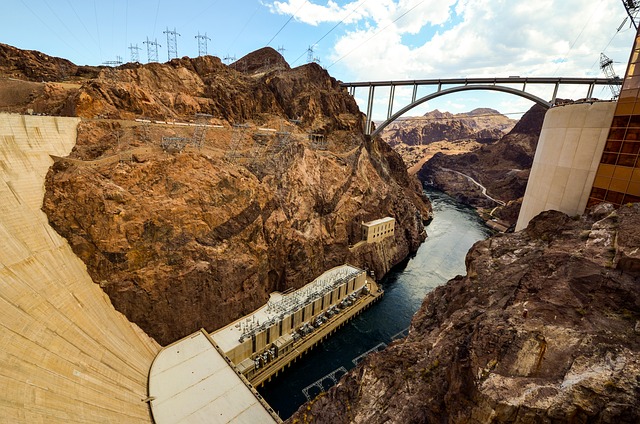Civil Geotechnical Engineering Solutions for Commercial and Residential Projects
Civil Geotechnical Engineering Solutions for Commercial and Residential Projects
Blog Article
Just How Consulting Engineers Enhance Geotechnical Engineering Projects: Insights Into Their Proficiency, Methods, and Collaborative Approaches
Consulting designers are essential in improving geotechnical design projects, applying their specialized understanding to navigate the intricacies of subsurface conditions. Their techniques include a series of site examination methods, including Requirement Infiltration Tests (SPT) and Cone Penetration Examinations (CPT), which educate vital decisions during the layout and construction phases. Furthermore, their collaborative techniques foster communication amongst varied project stakeholders, ultimately forming the project's trajectory. As we analyze the complex functions these experts play, it becomes clear that their contributions extend past technical proficiency, motivating a better take a look at the implications for task success.
Function of Consulting Engineers
The knowledge of speaking with designers in geotechnical design is fundamental to the effective execution of building and construction jobs. These experts play a critical role in analyzing soil and rock homes, which are crucial factors influencing layout and construction choices. By conducting extensive website examinations, getting in touch with designers accumulate vital information that notifies the design process, guaranteeing jobs are improved stable and appropriate ground.
Consulting designers additionally supply invaluable understandings into danger monitoring (geotechnical geologist). They determine potential geotechnical dangers, such as landslides, dirt liquefaction, and negotiation problems, making it possible for stakeholders to carry out efficient mitigation approaches. Their know-how aids in maximizing structure designs, which can lead to substantial cost savings and boosted safety and security
Furthermore, seeking advice from designers work as an essential web link between project proprietors, architects, and specialists. Their capability to translate complex geotechnical information into workable referrals promotes collaboration and promotes educated decision-making throughout the job lifecycle. This multidisciplinary technique not only boosts task performance but likewise ensures conformity with regulative criteria and best practices.
Secret Methods in Geotechnical Engineering

One key technique is website investigation, which includes carrying out field tests and lab evaluations to gather data on subsurface conditions. Methods such as Standard Infiltration Testing (SPT) and Cone Penetration Screening (CPT) are commonly used to examine dirt stratigraphy and stamina. Additionally, geophysical methods, including seismic and electric resistivity surveys, offer non-invasive ways to analyze subsurface features.
One more vital methodology is numerical modeling, which allows engineers to simulate various situations and anticipate exactly how soil-structure interactions will certainly behave under different loading conditions. Limited Aspect Evaluation (FEA) is a typical technique used in this context.
In addition, the style of foundations, keeping frameworks, and earthworks depends heavily on these techniques - geotechnical geologist. By integrating innovative logical you could look here devices with area data, speaking with designers can establish customized solutions that attend to certain job obstacles, ultimately adding to the security and security of building and construction tasks
Significance of Soil Evaluation
Dirt analysis acts as a fundamental component in geotechnical engineering, providing vital understandings right into the physical and chemical residential properties of soil essential for effective construction preparation. Recognizing dirt qualities is critical for identifying its load-bearing ability, drain actions, and capacity for settlement or instability. Comprehensive soil examinations, including tasting and research laboratory screening, assistance recognize criteria such as soil kind, dampness content, thickness, and shear strength.
These evaluations educate the selection of suitable building and construction strategies and products, inevitably influencing project security and long life. As an example, natural dirts might need different foundation layouts contrasted to granular soils, requiring tailored engineering remedies. Soil evaluation aids in identifying impurities that could present risks to human wellness or the setting, allowing for the advancement of mitigation methods.
Integrating dirt analysis right into the onset of project growth assists to lessen unforeseen difficulties, guaranteeing that designers can prepare for and deal with prospective problems before they rise. By establishing an extensive understanding of the site problems, seeking advice from designers can optimize style effectiveness and minimize expenses, thus boosting the general success of geotechnical engineering projects.
Collective Methods in Projects
Effective geotechnical projects usually rest on joint approaches that combine diverse knowledge from numerous techniques. Efficient collaboration amongst seeking advice from engineers, read this geologists, ecological researchers, and construction professionals is crucial for addressing complicated difficulties and enhancing project outcomes. By leveraging the special abilities and knowledge of each staff member, projects can gain from an alternative understanding of the site problems, governing requirements, and engineering restrictions.
Normal interaction and interdisciplinary meetings facilitate the sharing of understandings and cultivate a society of synergy. These collective initiatives allow the recognition of possible risks early in the job lifecycle, permitting prompt reduction methods. Additionally, integrating feedback from stakeholders, including regional communities and governing firms, makes certain that all point of views are considered, enhancing task approval and compliance.
In addition, the combination of advanced innovations, such as Geographic Information Systems (GIS) and Building Details Modeling (BIM), additional boosts cooperation. These important link devices permit the real-time sharing of information and visualization of geotechnical conditions, promoting educated decision-making. Eventually, a collective method not only enhances task execution yet additionally lays the structure for innovative remedies to intricate geotechnical engineering difficulties.
Effect on Project Results

Consulting engineers employ innovative techniques such as risk assessment and anticipating modeling, which improve the precision of job projections. Their ability to integrate ingenious modern technologies, like geotechnical instrumentation and information analytics, even more improves the layout and construction processes. Therefore, jobs experience improved performance, reduced prices, and decreased hold-ups.
In addition, fostering reliable interaction and partnership amongst team members boosts analytical abilities. When obstacles arise, a joined front enables swift recognition of solutions, stopping potential problems. Eventually, the collective efforts of getting in touch with designers add to greater top quality results, making sure that tasks fulfill both regulative criteria and customer assumptions.
Final Thought

Report this page